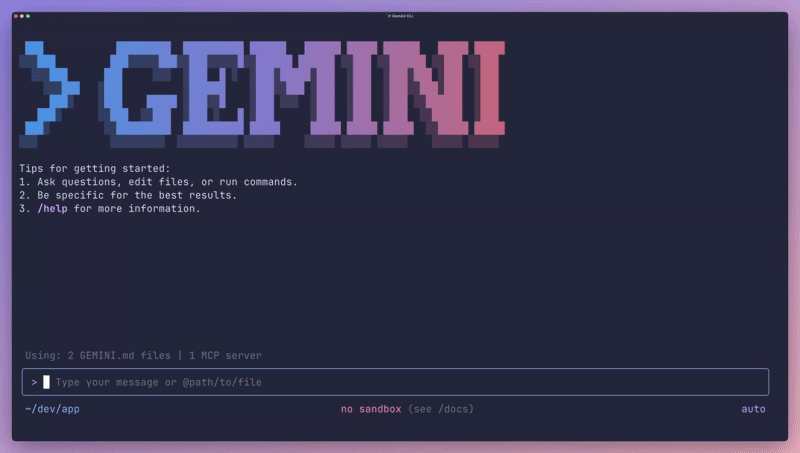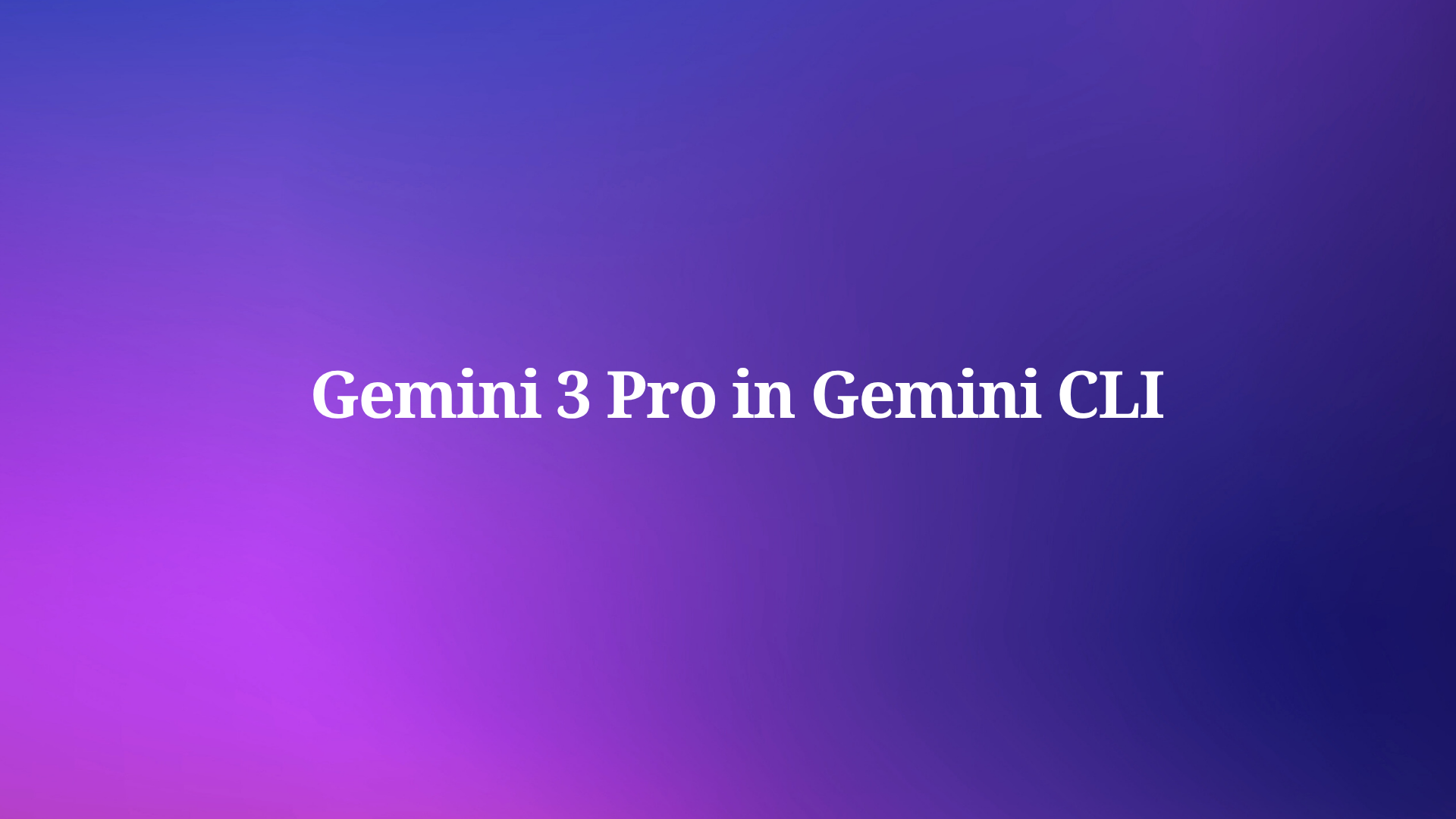Google engineers no longer need to leave the terminal to access one of the most capable coding models available today. On November 18, 2025, the Google Developers Blog announced that Gemini 3 Pro now powers Gemini CLI for eligible users. This integration transforms a lightweight open-source tool into a full-fledged AI agent that handles complex engineering tasks with unprecedented precision.
Developers have waited years for Google to field a true competitor to OpenAI’s Codex—the model that powered the original GitHub Copilot and set the bar for code generation. Gemini 3 Pro in Gemini CLI finally delivers that challenge directly where many engineers live: the command line.

What Exactly Is Gemini CLI?
Google launched Gemini CLI as an open-source (Apache 2.0) AI agent that brings Gemini models straight into your terminal. Developers install it globally with a single npm command:
npm install -g @google/gemini-cli@latest
Once installed, you type gemini (or just g) and start prompting. The tool supports free-tier access to Gemini models with generous rate limits—60 requests per minute and 1,000 per day for personal Google accounts. However, the real power unlocks when you enable preview features and switch to Gemini 3 Pro.
Access to Gemini 3 Pro remains in controlled rollout. Google AI Ultra subscribers and paid Gemini API key holders get it immediately. Everyone else joins a waitlist or tracks progress on GitHub. The model appears in the CLI as gemini-3-pro-preview and requires enabling preview mode in settings.
Why Gemini 3 Pro Changes Everything for Coding Agents
Gemini 3 Pro stands out because it combines massive context (up to 1 million tokens in related tools), native multimodal understanding, and advanced tool-use capabilities. Consequently, it executes multi-step, agentic workflows that earlier models could only approximate.

The official post highlights five concrete demonstrations that show how far the bar has moved:
Generate a production-ready 3D app in one prompt
Engineers prompt: “Create a 3D voxel simulation of the Golden Gate Bridge using Three.js that runs in a single HTML file.” Gemini 3 Pro outputs a complete, optimized application using InstancedMesh, custom GLSL shaders, and performance tweaks—ready to deploy instantly.
Turn a hand-drawn sketch into a working UI
You drag an image file into the terminal. Gemini 3 Pro analyzes the layout, then generates pixel-perfect HTML, Tailwind/CSS, and React/Vue code that matches the sketch exactly.
Translate natural language into precise, complex shell commands
Ask: “Use git bisect to find the commit that changed my editor’s default theme to dark.” Gemini 3 Pro writes the exact bisect script, runs it, and explains the result in plain English.
Auto-generate searchable, user-facing documentation
Point it at a codebase, and Gemini 3 Pro produces Markdown docs with architecture diagrams, usage examples, and even an embedded search widget.
Debug and fix a live production service autonomously
In one example, Gemini 3 Pro connects to Cloud Run and Snyk, identifies a memory leak, proposes a fix, writes the patch, runs tests, and deploys—all without human intervention.
These examples go far beyond simple autocomplete. They demonstrate true agentic behavior: reasoning, tool calling, error correction, and iteration in a loop.
How Gemini 3 Pro Stacks Up Against OpenAI Codex and GitHub Copilot
Codex powered the first wave of AI coding tools. It excelled at filling functions and translating comments to code, but it lacked native multimodality and struggled with very large context or multi-turn agentic tasks.
Gemini 3 Pro addresses those gaps directly:
- Multimodal input — Accept images, PDFs, or even live terminal output as context.
- Superior reasoning — Google claims state-of-the-art performance on complex engineering benchmarks.
- Tool orchestration — Built-in ReAct loop plus Model Context Protocol (MCP) servers for custom tools.
- Terminal-native workflow — No IDE required; everything happens where scripts and git already live.
Early users report that Gemini 3 Pro in the CLI often outperforms Copilot in whole-file generation, refactoring large codebases, and understanding project-wide architecture. Furthermore, because the CLI is open-source, developers can extend it with custom MCP servers for proprietary tools or internal services.
Getting Started with Gemini 3 Pro in Your Terminal Today
Follow these steps to try it yourself:
Update Gemini CLI:
npm install -g @google/gemini-cli@latest
Authenticate with a Google account that has access (Ultra or paid API key).
Enable preview features: Open /settings inside the CLI and toggle previews on.
Switch models:
gemini --model gemini-3-pro-preview
Start prompting. Try dropping an image or asking for a full-stack feature.
Rate limits for Gemini 3 Pro are higher for paid tiers, and Google promises gradual rollout to more users over the coming weeks.
Real-World Impact: From Prototype to Production in Minutes
Consider a common scenario: You sketch a mobile app UI on paper, scan it, and drag the image into Gemini CLI. Within seconds, Gemini 3 Pro outputs a Flutter or React Native codebase with navigation, state management, and even placeholder API calls.
Next, you ask it to implement the backend in FastAPI or Node.js with JWT auth and PostgreSQL integration. Gemini 3 Pro generates the entire service, Dockerfiles, and OpenAPI spec.
This is where Apidog shines. Take the generated OpenAPI YAML, import it into Apidog (free download), and instantly get:
- A mock server for frontend developers to use immediately.
- Automated contract tests that catch breaking changes.
- Visual documentation that stays in sync.
- One-click performance and security scans.
Small workflow improvements like this turn hours of boilerplate into minutes. Developers who pair Gemini 3 Pro CLI with Apidog report shipping features 3–5× faster.
Limitations and Trade-Offs You Should Know
Gemini 3 Pro in CLI is still labeled “preview.” Occasional rate-limiting or regional availability issues occur during the rollout. Additionally, full agentic mode consumes more tokens than simple completions, so free-tier users hit limits faster.
Privacy-conscious teams benefit from the open-source nature—they can self-host or audit everything. Enterprise users get the same data protections as Gemini Code Assist Standard/Enterprise.
The Bigger Picture: Google’s Aggressive Push into Developer Tools
By putting Gemini 3 Pro directly into the terminal, Google signals intent to own the entire developer stack—from idea to deployment. Gemini CLI complements Gemini Code Assist in VS Code/JetBrains, but many engineers prefer the speed and scriptability of the command line.
Furthermore, the Model Context Protocol (MCP) opens the door for community-built extensions. Expect third-party MCP servers for AWS, Kubernetes, Datadog, or even local LLMs in the coming months.
Conclusion: Yes, Google Is Catching—and Possibly Passing—Codex
Gemini 3 Pro in Gemini CLI delivers the agentic, multimodal, terminal-first coding experience that developers dreamed of when Codex first launched Copilot years ago. It generates full applications from sketches, debugs production services autonomously, and orchestrates tools with precision that feels almost magical.
Yet the real productivity multiplier comes from chaining it with specialized tools. When Gemini 3 Pro hands you a perfect OpenAPI spec in one shot, having Apidog ready turns that spec into a testable, mockable, documented API instantly.
The gap between Google and OpenAI in developer tools has narrowed dramatically overnight. If you write code for a living, install Gemini CLI, get on the Gemini 3 Pro waitlist (or upgrade to Ultra), and download Apidog. Those small changes will redefine how fast you ship.
The terminal just became the most powerful IDE on the planet.



